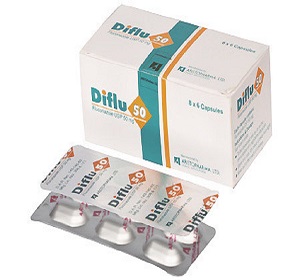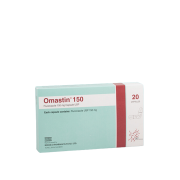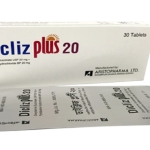Diflu (Fluconazole)
Fluconazole is a new subclass of synthetic triazole antifungal agent which acts by inhibition of the ergosterol component of the fungal cell membrane.
Description
Fluconazole is the first of a new subclass of synthetic triazole antifungal agent which acts by inhibition of the ergosterol component of the fungal cell membrane. It is active against a broad spectrum of fungal pathogens and is available for oral use.

Presentation
Diflu-50 Capsule: Each capsule contains Fluconazole USP 50 mg.
Diflu-150 Capsule: Each capsule contains Fluconazole USP 150 mg.
Diflu-200 Capsule: Each capsule contains Fluconazole USP 200 mg.
Diflu Powder for Suspension : When prepared,each 5 ml contains Fluconazole USP 50 mg.
Indications
It is indicated in the treatment of vaginal candidiasis, oropharyngeal & oesophageal candidiasis, candidal urinary tract infection, peritonitis, systemic candidiasis and cryptococcal meningitis.
Dosage & Administration
The daily dose of DIFLU should be based on the nature and severity of the fungal infection. Most cases of the fungal infections require multiple dose therapy. Treatment should be continued until clinical parameters of laboratory tests indicate that active fungal infection has subsided. An inadequate period of treatment may lead to recurrence of active infection. Immunocompromised patients usually require maintenance therapy to prevent relapse.
Adults:
| Infections | Recommended dosage |
|---|---|
| Adults: Vaginal candidiasis | 150 mg as a single dose |
| Oropharyngeal candidiasis | 200 mg on the 1st day followed by 100 mg dailly for 14 days |
| Oesophageal candidiasis | 200 mg on the 1st day followed by 100 mg dailly for 14-30 days |
| Systemic candidiasis & Cryptococcal infection | 400 mg on the 1st day followed by 200 mg daily for 28 days or longer based on clinical response |
| Tinea corporis/ tinea cruris/ tinea pedis/ other tinea kerion | 50 mg daily for 2-4 weeks (for up to 6 weeks in tinea pedis) |
| Prevention of fungal infections in immunocompromised patients | 50-400 mg daily adjusted according to risk |
Neonates:
| Infections | Recommended dosage |
|---|---|
| Oesophageal candidiasis | 3 mg/Kg every 72 hours up to 2 weeks old 3 mg/Kg every 48 hours up to 2-4 weeks old |
| Systemic candidiasis & cryptococcal infection | 6-12 mg/kg every 72 hours up to 2 weeks old 6-12 mg/kg every 48 hours up to 2-4 weeks old |
| Prevention of fungal infections in immunocompromised patients | 3-12 mg/kg every 72 hours up to 2 weeks old 3-12 mg/kg every 48 hours up to 2-4 weeks old |
Contrainidications
It is contraindicated to patients hypersensitive to this drug and in advanced liver disease and in nursing mother.
Warning & Precautions
Caution should be taken in renal impairment, pregnancy and breast-feeding and the raised liver enzymes.
Side effects
Therapy with Fluconazole is well tolerated. The common adverse effects are nausea. abdominal pain, vomiting, diarrhoea, headache and skin rash.
Drug interaction
Rifampicin reduces plasma concentration of Fluconazole. Fluconazole enhances the effect of nicoumalone, warfarin and phenytoin. It also increases the plasma concentration of sulphonylureas & theophlline.
Use in special groups
Use in pregnancy: Fluconazole should be used in pregnancy only if the potential benefit justifies the possible risk to the fetus.
Use in lactation: Fluconazole is secreted in human milk at concentrations similar to plasma. Therefore, the use of Fluconazole in nursing mothers is not recommended.
Packing
Diflu-50 Capsule: Box containing 48’s capsules in alu-alu blister pack.
Diflu-150 Capsule: Box containing 12’s capsules in alu-alu blister pack.
Diflu-200 Capsule: Box containing 12’s capsules in alu-alu blister pack.
Diflu Powder for Suspension: Bottle containing dry powder for preparation of 35 ml Suspension.




